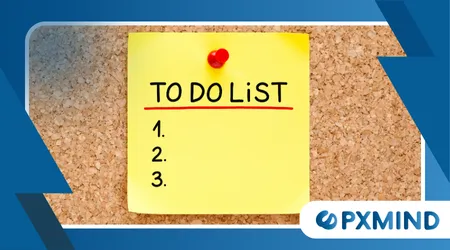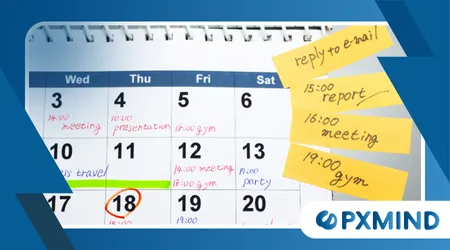Time Blocking vs. To-Do Lists: What’s Better?

The modern professional constantly seeks the silver bullet for peak productivity.
Anúncios
The debate surrounding Time Blocking vs. To-Do Lists is more relevant than ever in our hyper-connected 2025 reality.
Both systems promise to organize your chaos, yet their core philosophies diverge significantly, impacting focus and output.
Choosing the right method, or an effective combination, determines whether your day is one of structured deep work or reactive task juggling.
We’ll dissect these two titans of time management to help you master your schedule.
What is the Fundamental Difference Between Time Blocking and To-Do Lists?
A To-Do List is a simple, flexible inventory of required actions. It functions as a memory aid, cataloging tasks without dictating when the work happens.
This system offers great cognitive relief by externalizing mental obligations.
Time Blocking, conversely, transforms your calendar into a detailed action plan.
It mandates specific periods—blocks—for every activity, including emails, deep work, and even breaks. This method assigns a specific resource (time) to every task on your schedule.
Why Do Traditional To-Do Lists Often Lead to Procrastination? Time Blocking vs. To-Do Lists
To-Do Lists suffer from what is often called “the illusion of productivity.” Simply seeing a long list can feel like progress, but it rarely forces prioritization.
Without a time constraint, your brain defaults to the path of least resistance.
This flexibility is a double-edged sword; it allows you to easily postpone complex, high-value tasks.
The lack of temporal context means decision fatigue is high, as you constantly decide what to work on next.
A long list only emphasizes the sheer volume of your obligations, which is often overwhelming.
How Does Time Blocking Create Deep Work Opportunities?
Time blocking is fundamentally an intentional scheduling practice. It acts as an appointment system with yourself, protecting high-value work from the urgent but unimportant noise.
This method encourages the kind of sustained focus necessary for creative or strategic tasks.
Read here: How to Use Focus Blocks to Maximize Your Time
By allocating a two-hour “Deep Work” block, you explicitly signal to yourself and others that you are unavailable.
This scheduled isolation minimizes context-switching, a major productivity killer in remote work environments.
This proactive approach ensures your most important work gets done first.
A To-Do List is like a restaurant menu—you see all the options, but you still have to choose and wait.
Time Blocking is the reservation you already made, complete with a confirmed table and set time.

The Argument for Flexibility: Where To-Do Lists Excel
Despite its structural limitations, the To-Do List shines in its accessibility and low friction. Quick, small, and emergent tasks are easily captured and executed using a simple checklist.
For highly unpredictable roles, or for personal administrative tasks, a fluid list is often superior.
See how interesting: How to Manage Your Energy Instead of Your Time
Checking off an item provides a quick, satisfying dopamine hit that reinforces the productive behavior.
Furthermore, when an urgent, unscheduled interruption occurs, the list is simple to adjust. For minor follow-ups or simple logistical steps, the To-Do List remains incredibly practical.
What Limitations Must a Time Blocker Be Aware Of?
The primary challenge of Time Blocking is its inherent rigidity; an unexpected meeting or crisis can shatter a perfectly planned day.
Over-optimistic scheduling can lead to tasks bleeding into the next block, causing a cascade of delays.
This fragility can quickly create feelings of failure and frustration, leading some people to abandon the system entirely.
For time blocking to succeed, the user must build intentional “buffer blocks” for unexpected events.
A poorly planned block system is often worse than no system at all because it induces unnecessary stress. It demands honesty about how long tasks actually take to complete.
Table: Core Differences in Approach
| Feature | Time Blocking (The Proactive Scheduler) | To-Do List (The Flexible Tracker) |
| Focus | Allocation of Time to a Task | Inventory of Tasks to Complete |
| Prioritization | Forced by limited time on the calendar | Manual (e.g., A/B/C, 1/2/3) |
| Flexibility | Low: Requires frequent rescheduling | High: Easy to reorder or defer |
| Cognitive Load | Low: Decision of “what’s next” is eliminated | High: Requires constant task selection |
| Best For | Deep Work, Project Milestones, Meetings | Quick Errands, Admin Tasks, Idea Capture |
The Hybrid Solution: A Synthesis of Strengths
Why must we view Time Blocking vs. To-Do Lists as a zero-sum game? The most effective approach for the complexity of 2025 is a strategic hybrid model.
Use Time Blocking for the critical few—the tasks that move the needle forward and require intense focus. Schedule blocks for “Project X: 90 Minutes” and “Email Processing: 30 Minutes.”
Use a To-Do List for the operational many—all the small, quick items and maintenance tasks.
++ What Neuroscience Says About Creativity
When a block of “Admin Time” arrives, pull tasks from the To-Do List to fill that slot. This merges the list’s capture power with the block’s execution discipline.
A 2011 study published in the Journal of Experimental Social Psychology found that forming a plan for task completion, rather than simply listing the tasks, helped reduce the “intrusive thoughts” associated with unfinished goals (the Zeigarnik effect).
This research strongly supports the planning power inherent in time blocking. When we schedule it, our mind believes it is handled.

The Content Creator’s Hybrid Day Time Blocking vs. To-Do Lists
Imagine a content creator juggling writing and client calls. She time blocks a two-hour Writing Block and a 90-minute Client Strategy Block.
All her miscellaneous tasks—”Review blog comments,” “Update social media bio,” “Send invoice”—go onto a flexible To-Do List.
When she hits her scheduled 30-minute Admin Block, she pulls only from that list.
Her priority work is protected, and her small tasks are contained. What system gives you the clarity to truly scale your impact?
The conversation of Time Blocking vs. To-Do Lists ultimately highlights a choice between structure and freedom.
High performers in our current era understand that real mastery lies not in choosing one but in leveraging the strengths of both systems.
Structure your most critical work; track the rest.
Frequently Asked Questions
Is Time Blocking only for corporate executives?
Absolutely not. Time blocking is highly effective for students, freelancers, artists, and anyone needing dedicated blocks of focused time for creative or complex work.
It is particularly useful for remote workers needing to define clear work-life boundaries.
Does a To-Do List make me less productive?
Not inherently. A To-Do List’s flaw is not in its existence but in its misuse. When tasks are not prioritized or given an estimated completion time, the list can become a passive reservoir of intentions rather than an active plan for execution.
How much of my day should I time block?
Experts often recommend blocking 60-80% of your day.
The remaining 20-40% should be left unscheduled as flexible “buffer time” to handle interruptions, unexpected tasks, or simply to recover when a planned task runs long.
This maintains structure without sacrificing necessary adaptability.
Can I use both a digital calendar and a paper list?
Yes, many people find success using a digital calendar for Time Blocking (scheduled appointments) and a simple analog notebook for their quick-capture To-Do List.
The key is to check both regularly and ensure tasks from the list are purposefully moved into scheduled blocks.
